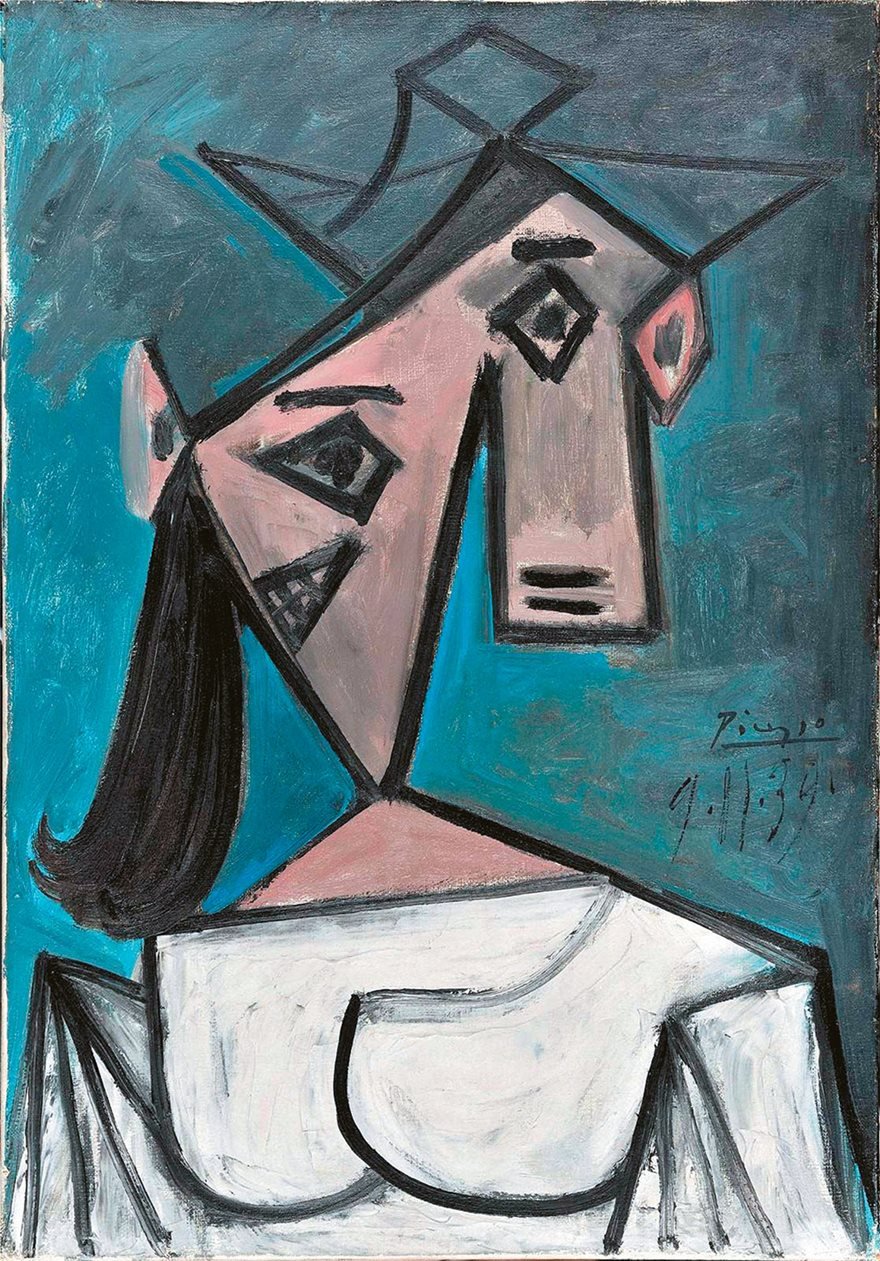
Greek authorities are celebrating the recovery of two paintings—one by Pablo Picasso and another by Piet Mondrian—that were stolen from the National Museum in Athens in 2012. The works were discovered in Keratea, a town in East Attica, Greece, officials said in a press conference.
Picasso gave Head of a Woman (1939), one of his fractured portraits of his lover Dora Maar, to the Greek people as a gift in 1949 in recognition of the country’s resistance to the invading Nazi forces. Picasso inscribed the back of the canvas: “For the Greek people, a tribute by Picasso.” The personal message would have made the work “impossible” to sell, according to Greek culture minister Lina Mendoni.
The Picasso painting and Mondrian’s Stammer Windmill (1905) were recovered from a dry river bed, authorities said. Both were wrapped in plastic. Officials did not say how police found the suspect, a 49-year-old Greek construction worker, or the hiding place, but noted that the works are believed to have been recently moved to the river bed following news that authorities were closing in.
In February 2021, police received a tip that the Picasso painting was still in the country, and was being offered on the illicit market for $20 million, though it never found a buyer, likley because of its high profile.
Police investigators search for evidence at the Athens’ National Gallery on January 9, 2012, after artworks were stolen from the gallery overnight, police said. . Photo: Louisa Gouliamaki/AFP PHOTO /Getty Images.
Just before dawn on January 9, 2012, two burglars slipped into the National Gallery in Athens through an unlocked balcony entrance. They took the Picasso and Mondrian canvases off the wall, along with a sketch by Italian artist Guglielmo Caccia, leaving empty frames in their wake. The thieves had set off alarms at various locations throughout the museum to distract security officers while they worked; while trying to escape, one thief tripped an alarm and dropped a fourth painting, another landscape by Mondrian. According to state television, the third work by Caccia was damaged during the heist and discarded shortly after.
The theft occurred at the height of Greece’s debt crisis, and due to a worker strike the museum had reduced its security staff. An investigation found that the safety measures were “non-existent” at the National Gallery, and since the heist security has been overhauled and enhanced.
Greece’s public order minister, Michalis Chrisochoidis, called the recovery a “major success.”
“The police worked systematically, in a collaborative and creative way, and they should be commended for that,” he said. “At the new National Gallery, the [paintings] will be given the place they deserve.”